COVID-19: Emory on the Front Lines
Emory Magazine | Spring/Summer 2020
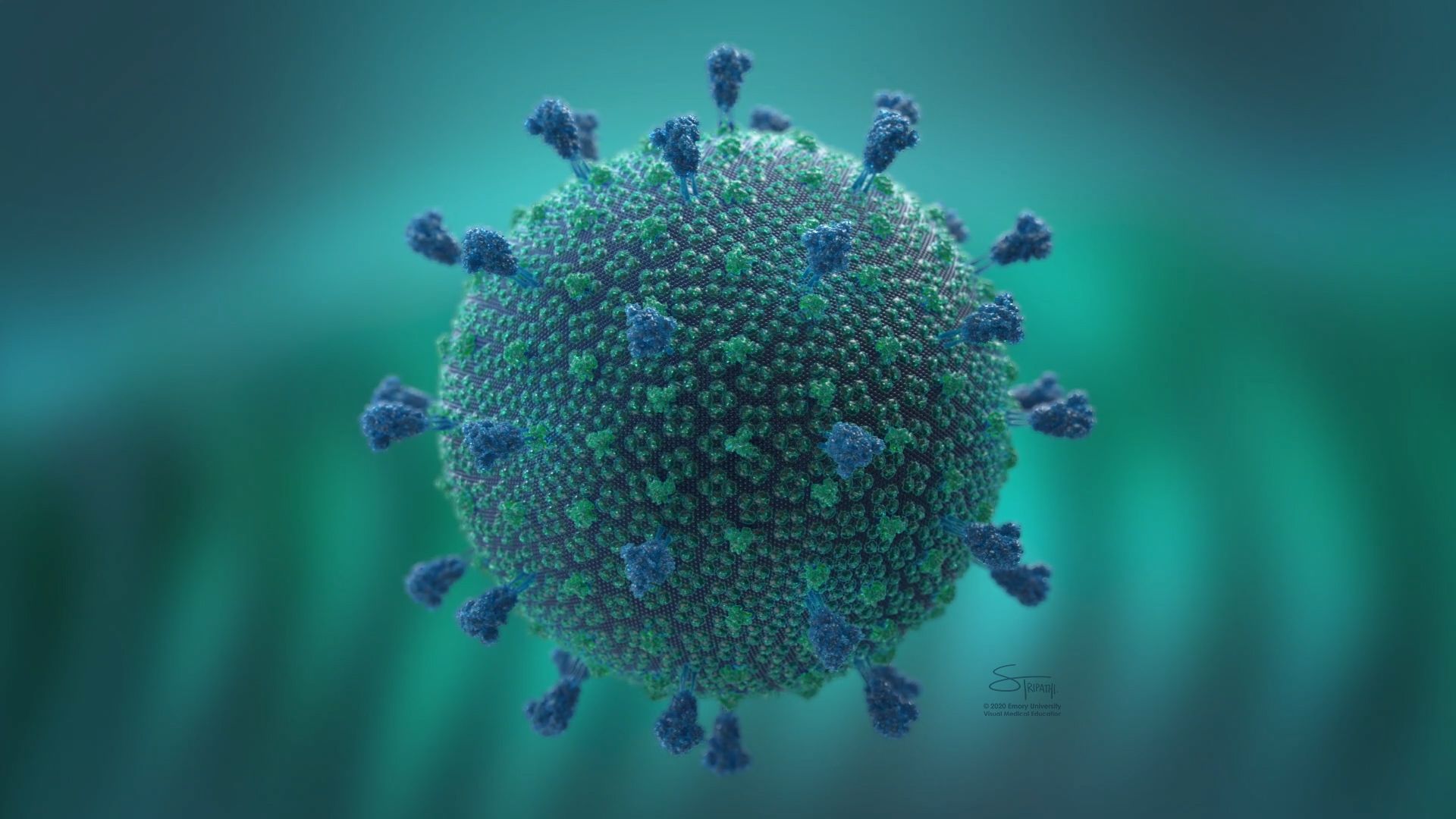
Part 4 in a series of personal stories on how alumni, faculty, and students are fighting the pandemic in a wide variety of ways.
ROOM TO BREATHE
Nurse anesthetist Donté Flanagan has answered the call for experts to intubate and ventilate COVID-19 patients in New Orleans.
Donté Flanagan 04Ox 06N has one of the most difficult jobs on the front line of fighting COVID-19. As a certified registered nurse anesthetist (CRNA) based in hard-hit New Orleans, he’s been asked to cover emergency rooms and intensive care units to help in performing one critical task: Keep patients breathing.
“It feels like we’re in wartime here,” says Flanagan, who works at Touro Infirmary for LCMC Anesthesia. “My CRNA colleagues and I are definitely all stretching our scope of practice, going above and beyond our normal work inside of operating rooms. Since most elective surgeries and procedures have been postponed, we’re being asked to spend most of our time now in ERs and ICUs, helping to perform intubations, titrating sedation and paralytics, and administering mechanical ventilation.”
Intubation, in particular, is not only an unpleasant experience for patients, but also a tricky, specialized procedure.
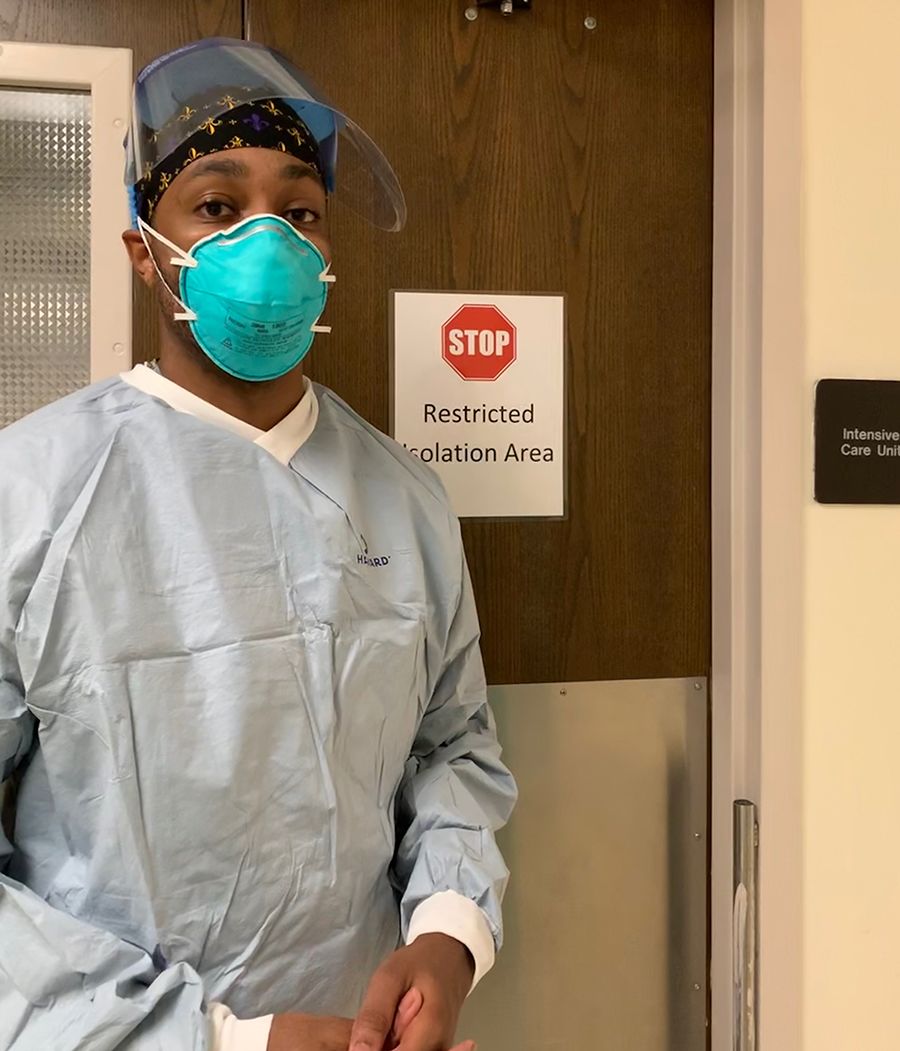
Donté Flanagan 04Ox 06N is a certified registered nurse anesthetist who works in New Orleans at Touro Infirmary for LCMC Anesthesia.
“On paper, it seems like a straightforward, step-by-step technique, but in practice every case is different and presents unique challenges,” Flanagan says. “With some COVID-19 patients, we are seeing some airway changes where they have swollen tissue inside of the oral pharynx or a narrowing of the trachea and the tissue around it. Having the repetitions — and the visual expertise at recognizing the differences in anatomy by sight and feel — is critical at reducing the number of attempts. Extra attempts can further compromise or damage the airway.”
Flanagan estimates that he’s performed 10,000 intubations so far in his 10-year career as a nurse anesthetist, compared with a non-specialist who might have only performed 100.
“There is a different level of comfort and expertise that goes with it,” says Flanagan, who serves on Emory’s Nurses Alumni Association Board. “There’s a much greater chance at success if we are the first ones to attempt to manipulate the airway. That’s why we’ve been pulled in.”
All of the COVID-19 cases that reach this advanced stage have to be treated with great seriousness.
“We’re seeing patients coming in with pulmonary edema — fluid is building up in their lungs and they’re having a difficult time breathing,” he says. “Their tissues aren’t getting the oxygenation they need, and if we don’t intervene, eventually they just de-compensate and go into acute respiratory distress or cardiac arrest.”
And Flanagan knows that even if he’s successful in his new emergency role, COVID-19 remains a difficult foe to beat.
“When I intubate a patient succumbing to the coronavirus, I do so knowing that in some cases I could be the last person they ever talk to,” Flanagan says.

Donté Flanagan 04Ox 06N is a certified registered nurse anesthetist who works in New Orleans at Touro Infirmary for LCMC Anesthesia.
Donté Flanagan 04Ox 06N is a certified registered nurse anesthetist who works in New Orleans at Touro Infirmary for LCMC Anesthesia.
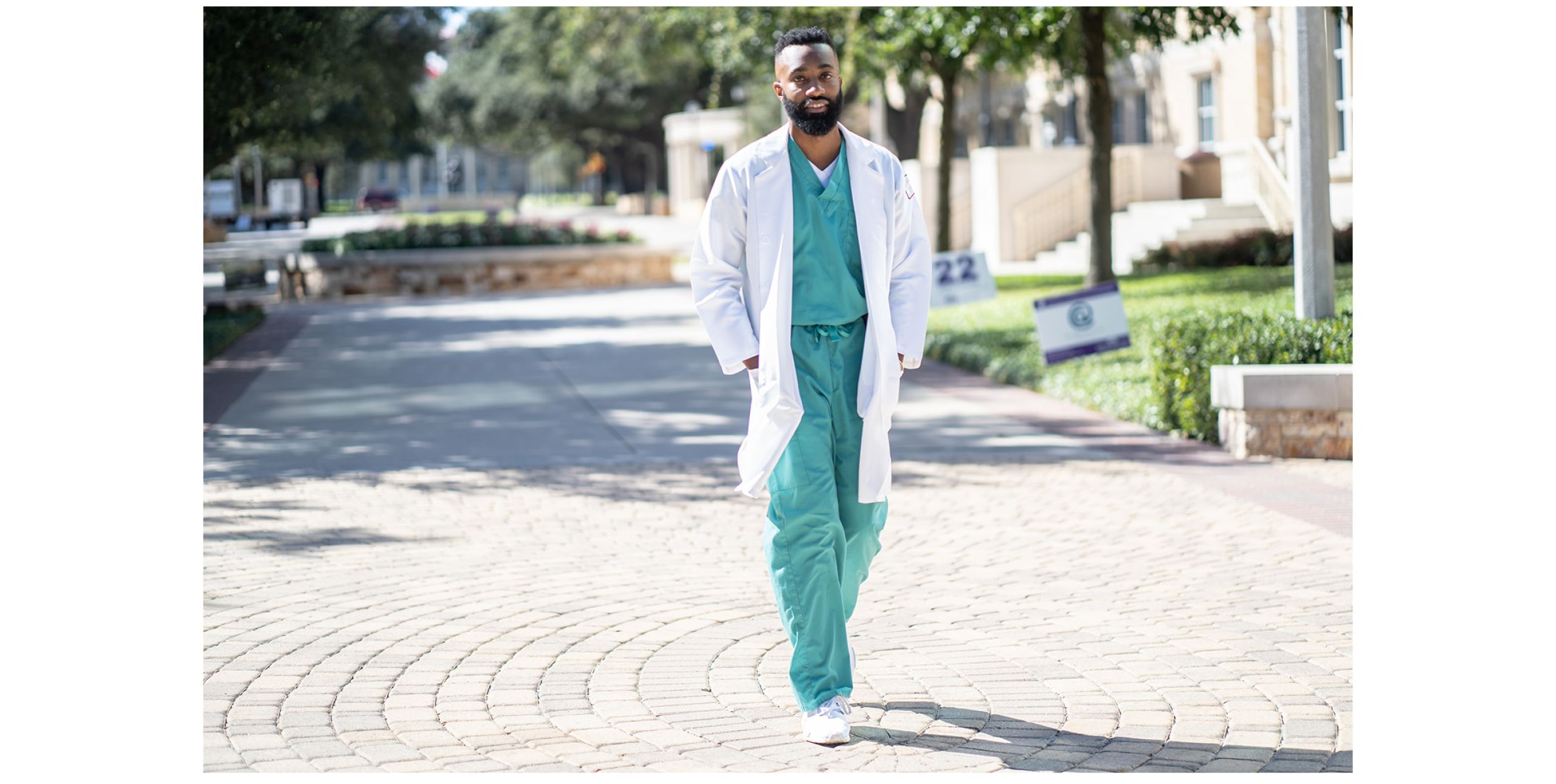
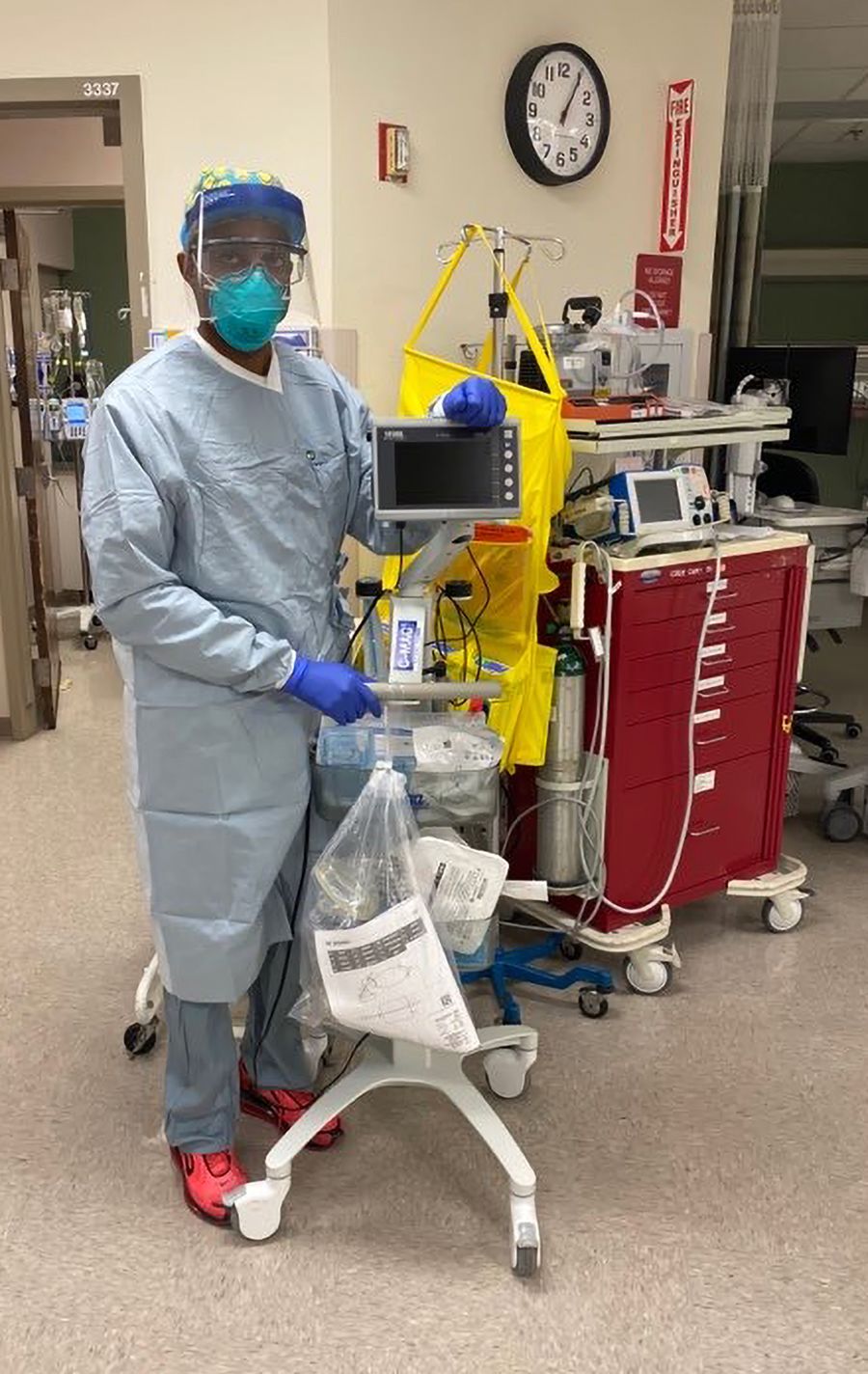
Flanagan has to gear up in personal protective equipment (PPE) whenever he works with COVID-19 patients.
Flanagan has to gear up in personal protective equipment (PPE) whenever he works with COVID-19 patients.
SURVIVING THE NEW ORLEANS SURGE
New Orleans has reported more than 800 COVID-19 related deaths so far, a surprisingly high death rate compared to other U.S. cities. Some experts attribute it to increased levels of obesity and other underlying health conditions prevalent in the metro area.
The city's hospitals saw a huge surge of cases in late March and early April, just weeks after hundreds of thousands of people enjoyed the city’s legendary Mardi Gras celebrations and traditional St. Patrick’s Day Parade despite the news that the coronavirus had reached the U.S.
“I was screaming from the mountaintops about it, mainly because people just weren’t taking the risks seriously enough,” says Flanagan, who’s also worked as a CRNA in Atlanta and New York City. “I guess if you’re young and living in a big city, you feel like you’re immortal or immune and you don’t see the danger until you or someone you know gets sick. I knew the outbreak was going to happen — as did so many of my healthcare colleagues — but it didn’t matter. Like clockwork, the patients started arriving in droves.”

Flanagan has to gear up in personal protective equipment (PPE) whenever he works with COVID-19 patients.
And though the healthcare industry predicted it, New Orleans and Louisiana weren’t fully prepared for the onslaught. “The hospitals were caught at first without the setup and the resources to fight the coronavirus,” Flanagan says. “At Touro, we had to convert two of our normal hospital units into isolation wards. And at one point our two main ICUs were completely filled with COVID-positive patients on ventilators. We even had a time where we couldn’t admit any more of them — we could only get them stabilized, intubated and on a ventilator, and then have to ship them to another hospital that had room.”
Over time, the city and its hospitals began to work more collaboratively and the outcomes improved, Flanagan says. “More units and floors in hospitals were turned into ICU units,” he says. “We were able to borrow ventilators from pediatric wards and hospitals where they weren’t being used. We got better at using and reusing personal protective equipment (PPE).”
While the first surge of COVID-19 patients has slowed, Flanagan hopes they’ve learned enough to be prepared for future waves.
HEAVY TOLL ON HEALTH WORKERS
Seeing so many patients in dire shape levies a heavy mental toll on Flanagan and his fellow front-line workers. “It’s difficult witnessing the outcomes, watching people suffer or even die alone since their families can’t visit them with the heightened restrictions in place,” he says.
Additional stress comes from being forced to work long shifts and the increased risk of becoming infected himself.
“Our shifts are very fluid, changing daily, and my days off are not necessarily guaranteed,” Flanagan says. “And when staff members test positive for the coronavirus and have to be quarantined, that pulls them out of the rotation and puts a heavier load on the rest of us. I don’t even look at my weekly schedule anymore — maybe just two days out at most — because it’s likely to change. This is a lot different from my pre-COVID job where most of my work was on a regular schedule and predictable, except for having occasionally to cover labor and delivery.”
Flanagan tries to maintain a positive attitude and remain in good spirits, but the daily grind of COVID-19 makes it difficult.
“I’m still coming in to work, still heeding the call to serve others in need, but there’s a sense of anxiety you can’t entirely escape,” he says. “We’re all wearing masks and gloves and maintaining our distance from each other as best we can. However, we do so knowing we could get infected because of the tiniest slip we make in protecting ourselves. At the same time, the whole atmosphere has changed in the hospital — the isolation doesn’t just happen at home. We’re wearing our masks in the lounge unless we’re eating. It’s hard to hold a conversation when you’re geared up. It’s hard to stay connected.”
Fighting the battle against the coronavirus day in and day out also evokes a kind of numbness — a defense mechanism — to what’s happening, Flanagan says. “When this is all over, those of us on the front lines are going to need a special debriefing or some other kind of catharsis to cope with what we’ve seen and what we’ve been through,” he says. “Every day we’re sharing stories with each other because we can’t keep it bottled up, but it’s not enough.”
When Flanagan does get some time off, he has two rules: No discussing his work and no watching the news. He’d rather decompress and spend quality time at home with his fiancée. “We’re definitely getting to know each other better by going through this together, that’s for sure,” Flanagan says. “She’s been my solace.”
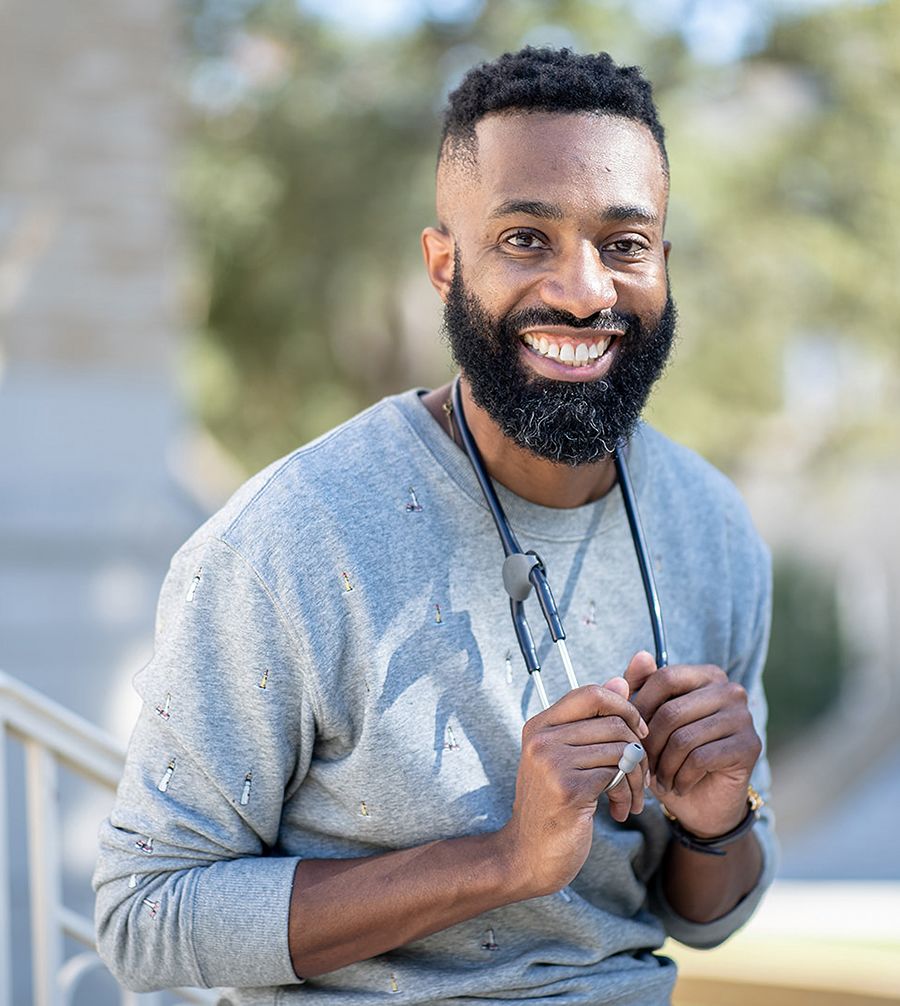
Flanagan has worked as a nurse anesthetist in Atlanta, New York City and New Orleans.
Still, Flanagan says, he had to tell his fiancée from the start that they both had to live as if they had tested positive for COVID-19 and were likely carriers — even if they exhibited no symptoms. That’s meant they’ve had to keep their exposure to the outside world as low as possible.
“I know it's the best way to treat it to avoid spreading the risk to others given the high risk I have for being infected,” he says. “It wouldn’t be fair.”

Flanagan has worked as a nurse anesthetist in Atlanta, New York City and New Orleans.
Flanagan has worked as a nurse anesthetist in Atlanta, New York City and New Orleans.

Want to know more?
Please visit Emory Magazine, Emory News Center, Emory University and Emory COVID-19 Updates.

